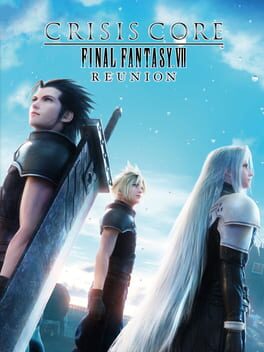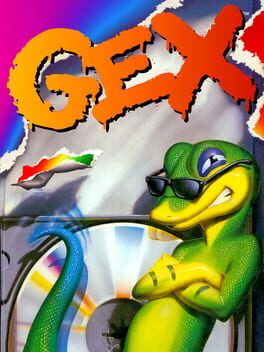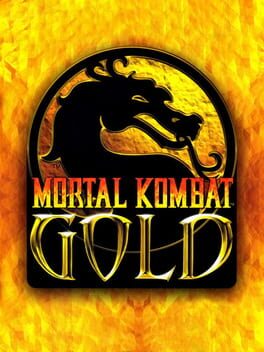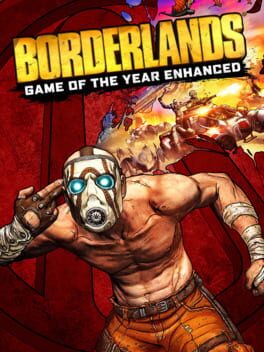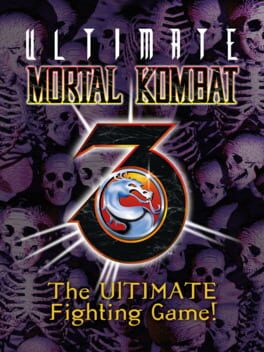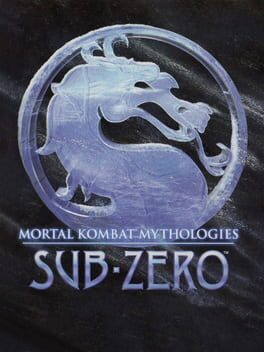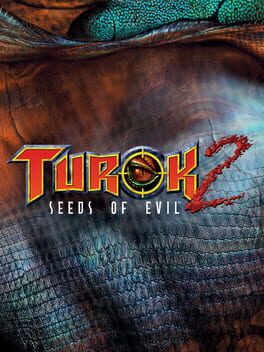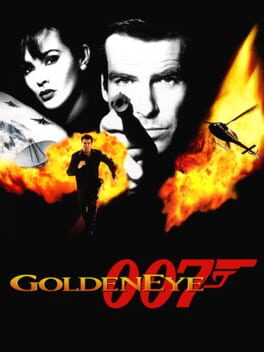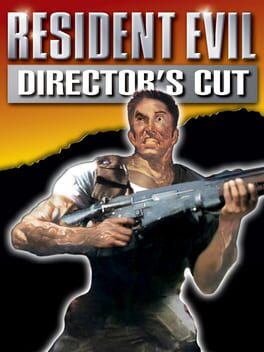theworldisadrag
Crisis Core is majorly undermined by an antagonist in the running for series-worst. That said, it also quickly redeems itself by having our shonen himbo protagonist Zack tell the villain to shut up in the middle of one of his interminable cornball JRPG villain monologues. He just like me fr
In a sense, this conflict between Zack's indefatigable posi energy and big bad Genesis' indecipherable faux-intellectualism serves as a microcosm for CC at large. It's a snappy and energetic pick-up hack'n slash, while simultaneously bearing the overwrought baggage of needing to lend back-story to Final Fantasy VII's morose RPG saga. You can lose hours to 3-minute sidequests which are really just glorified (and fun) mob fights and inexplicable boss rematches. Meanwhile the main game's "sidequest" moments give you a day-pass for constrained, RPG Redux exploration that rarely rewards you with anything other than more sidequests. All of this is weighed down by a complicated materia system that is far too easy to break, leaving a big fat question mark on how the game was supposed to be paced.
The game's identity crisis is never more clear than when you hit an emotional peak at the end of the first act, before spending a solid 15 minutes in a gauntlet of dialogues and side quests and nearly zero combat all so you can... retrieve a few gil from a street rat kid. It doesn't truly succeed at either of its big design models, largely because of its insistence on having their cake and attaching an epic poem to the cake, too.
The combat is a real treat, literally feels like "What if FF7R but handheld." In a different era I could see myself gradually burning through the game's remaining 180 (I did like 120 on Hard) side missions. Much like The Phantom Pain though, these side missions constantly run up against the plot, both in mechanics and storytelling. Clear one too many side missions and you will absolutely steamroll the game. Spend too much time in a side mission K-hole and you'll either lose track or at best feel out of step with the big plot beats of the game's very short story. In spite of all this, though, Zack was able to warm even my icy heart. He is such a foil to Cloud's incessant cold shoulder, and the trajectory of his story makes you really rethink how you perceive That One Major Thing about Cloud. The ending is way more brutal than I ever would have anticipated from 2008 Squenix, and it lands with just the right level of gravity. Plotholes or no.
That is, at least until Cloud doing a guttural, bone-aching scream is abruptly cut off by a hilariously upbeat and funky Anime End Credits type theme song.
(The Sephiroth stuff is sick and it adds some real dimension to his character to watch him being a completely likable guy. But let's not kid ourselves: those big scenes in Nibelheim were already part of the story, and CC doesn't add anything beyond a higher polygon count here.)
In a sense, this conflict between Zack's indefatigable posi energy and big bad Genesis' indecipherable faux-intellectualism serves as a microcosm for CC at large. It's a snappy and energetic pick-up hack'n slash, while simultaneously bearing the overwrought baggage of needing to lend back-story to Final Fantasy VII's morose RPG saga. You can lose hours to 3-minute sidequests which are really just glorified (and fun) mob fights and inexplicable boss rematches. Meanwhile the main game's "sidequest" moments give you a day-pass for constrained, RPG Redux exploration that rarely rewards you with anything other than more sidequests. All of this is weighed down by a complicated materia system that is far too easy to break, leaving a big fat question mark on how the game was supposed to be paced.
The game's identity crisis is never more clear than when you hit an emotional peak at the end of the first act, before spending a solid 15 minutes in a gauntlet of dialogues and side quests and nearly zero combat all so you can... retrieve a few gil from a street rat kid. It doesn't truly succeed at either of its big design models, largely because of its insistence on having their cake and attaching an epic poem to the cake, too.
The combat is a real treat, literally feels like "What if FF7R but handheld." In a different era I could see myself gradually burning through the game's remaining 180 (I did like 120 on Hard) side missions. Much like The Phantom Pain though, these side missions constantly run up against the plot, both in mechanics and storytelling. Clear one too many side missions and you will absolutely steamroll the game. Spend too much time in a side mission K-hole and you'll either lose track or at best feel out of step with the big plot beats of the game's very short story. In spite of all this, though, Zack was able to warm even my icy heart. He is such a foil to Cloud's incessant cold shoulder, and the trajectory of his story makes you really rethink how you perceive That One Major Thing about Cloud. The ending is way more brutal than I ever would have anticipated from 2008 Squenix, and it lands with just the right level of gravity. Plotholes or no.
That is, at least until Cloud doing a guttural, bone-aching scream is abruptly cut off by a hilariously upbeat and funky Anime End Credits type theme song.
(The Sephiroth stuff is sick and it adds some real dimension to his character to watch him being a completely likable guy. But let's not kid ourselves: those big scenes in Nibelheim were already part of the story, and CC doesn't add anything beyond a higher polygon count here.)
2008
Generic Sega Master System-esque platformer deliberately subverted by a very slight multiverse twist, which takes Link to the Past's white lodge / black lodge conceit and quadruples it. While the cute-thing-secretly-evil motif is done to death and usually obnoxiously edgy, I'll take a game that attempts to weave its scary elements into its design over the current interminable trend of walking-sim mascot horror or copy-paste low-poly Silent Hill knockoffs. Unreal Engine lighting templates don't create more interesting "creepypasta" games; thoughtful game design does.
Still, you can grasp that the aesthetic, while intentionally simplistic, lacks enough of an anchor to establish real personality. The movement doesn't feel great here, either, leading to more than a few needless game overs. Arguably worse, the puzzles are just not quite at the level of sophistication that may have elevated the game to an actually memorable status for its day. The last couple of stages — that is, the last proper level and then the bonus stage — were complicated enough that they had me scratching my head for about as long as I spent on the rest of the game to that point. I was just wanting to dig more out of the layered conceit, and then it ended. Probably right when it needed to, though.
Added a half star for the fact that this remarkably came out in 2008, amidst a burgeoning but largely by-the-numbers indie scene. Subtracted a half star because the music could be so, so much better.
Still, you can grasp that the aesthetic, while intentionally simplistic, lacks enough of an anchor to establish real personality. The movement doesn't feel great here, either, leading to more than a few needless game overs. Arguably worse, the puzzles are just not quite at the level of sophistication that may have elevated the game to an actually memorable status for its day. The last couple of stages — that is, the last proper level and then the bonus stage — were complicated enough that they had me scratching my head for about as long as I spent on the rest of the game to that point. I was just wanting to dig more out of the layered conceit, and then it ended. Probably right when it needed to, though.
Added a half star for the fact that this remarkably came out in 2008, amidst a burgeoning but largely by-the-numbers indie scene. Subtracted a half star because the music could be so, so much better.
2022
A core thing I've grown to believe about Metroidvanias (and to be honest, many RPGs full stop) is that too much reliance on stats to balance difficulty winds up discouraging exploration, because it means that if you see everything, the endgame becomes a cakewalk. (Souls has long since solved this by making your equipment's strength top out pretty early in terms of damage to late game bosses, which with only a few exceptions means you do have to learn the boss' patterns to win). There are several pieces of equipment here that just absolutely trivialize the game by an absurd factor compared to more normal equipment, which you may wind up wanting to abuse once you start growing weary of backtracking and constantly respawning enemies. The other problem here is that you'll never use like 70% of your inventory. Has anyone really ever remembered to use the TNT?
Music, art direction, movement, pacing, variety, verticality, exploration are all otherwise still very nearly at Super Metroid's tier of vision and excellence.
Music, art direction, movement, pacing, variety, verticality, exploration are all otherwise still very nearly at Super Metroid's tier of vision and excellence.
1994
1999
The mission design, art direction, and writing here is remarkably shitty for its day. Most [giant finger quotes] "story" is conveyed via obnoxious HUD mission descriptions, and the mission loops are almost always designed around forcing you to revisit an area you've already cleared, so you can collect an item that won't appear until you receive the new mission objective (which, of course, you can only receive after finishing the area for the first time).
While there was definitely a gap in the market for an endless RNG loot loop game on consoles at the time, it's a little surprising an aesthetic style so bland this found an audience so rapidly. Later games would ramp up the annoying epic cheese-monkey humor factor in the dialogue, but unlike this one, you couldn't really argue they lack personality.
Once the DLCs hit, though, the visual language starts to make a lot more sense, if for no other reason than the new environments use a color other than beige.
While there was definitely a gap in the market for an endless RNG loot loop game on consoles at the time, it's a little surprising an aesthetic style so bland this found an audience so rapidly. Later games would ramp up the annoying epic cheese-monkey humor factor in the dialogue, but unlike this one, you couldn't really argue they lack personality.
Once the DLCs hit, though, the visual language starts to make a lot more sense, if for no other reason than the new environments use a color other than beige.
Not a hardcore fighting game head, but an overstuffed character roster is the first thing to turn me off of a fighting game (Smash aside). So much bloat and junk here, not least of which is found in the very phoned-in, repetitive, exploding dog bones fatalities. Truly pales in comparison to the detail-obsessed art direction of the first two games.
1993
OK hear me out.
Mechanically it's 100% a disaster - difficult in all the worst ways and reliant on a jumping mechanic that is fundamentally broken (expecting you to press a button to turn around every time you land, for christ's sake).
It doesn't have anything resembling a real story. It somehow has junkier, more generic level-design than a trad straight-line left-to-right arcade brawler.
HOWEVER. The game sincerely successfully translates the trashy kung-fu B-movie atmosphere of the early games, right down to the Wal-Mart spandex costumes of the cutscene actors. The world feels slow, lumbering, threatening, and the music is surprisingly great given how low-rent the rest of the presentation feels. It would have benefited from more strict adherence to pre-rendered 2d backgrounds, but what's here suits the overall mood. In other words, it's not really a "so bad it's good" situation so much as it's just accidentally a unique and interesting aesthetic. I mean I don't recommend ever playing it.
Mechanically it's 100% a disaster - difficult in all the worst ways and reliant on a jumping mechanic that is fundamentally broken (expecting you to press a button to turn around every time you land, for christ's sake).
It doesn't have anything resembling a real story. It somehow has junkier, more generic level-design than a trad straight-line left-to-right arcade brawler.
HOWEVER. The game sincerely successfully translates the trashy kung-fu B-movie atmosphere of the early games, right down to the Wal-Mart spandex costumes of the cutscene actors. The world feels slow, lumbering, threatening, and the music is surprisingly great given how low-rent the rest of the presentation feels. It would have benefited from more strict adherence to pre-rendered 2d backgrounds, but what's here suits the overall mood. In other words, it's not really a "so bad it's good" situation so much as it's just accidentally a unique and interesting aesthetic. I mean I don't recommend ever playing it.
1998
Shining example of the drain-circling vibes of the 3d collectathon era. Pains to think how many 2d platformer studios -- original Gex is a completely serviceable platformer -- were shoved onto the 3d bandwagon. The quips are exhausting; the twin terrors of bad camera and jumping puzzles are a nightmare, something that even flagship 3d platformer Mario 64 didn't master. It's fascinating to watch a younger generation uncover these games and see them as endearing relics of videogame history. Having lived through this era, I want to leave this genre in a tomb.
Never been a huge "Damn this game has so many weapons hell yeah" guy, and that's unfortunately so much of what they're trying to sell you here. When you aren't 11 years old, it's more like cerebral BORE am I right.
Still some absolute god-tier songs in the score, of course. Also some fun level design and kineticism for the era. The basic reptoid enemies look a little generic but their many animations are obviously lovingly detailed and super memorable. In spite of the at-times mazey level design, the levels still feel enormous in scope. Importantly, like the original, the levels also have a ton of height and verticality, which is so important for conveying scale.
My ultimate take is that I wouldn't have changed anything about the level design, but I would have killed all of the objectives. They're so arbitrary and obviously phoned in to ape Goldeneye.
Still some absolute god-tier songs in the score, of course. Also some fun level design and kineticism for the era. The basic reptoid enemies look a little generic but their many animations are obviously lovingly detailed and super memorable. In spite of the at-times mazey level design, the levels still feel enormous in scope. Importantly, like the original, the levels also have a ton of height and verticality, which is so important for conveying scale.
My ultimate take is that I wouldn't have changed anything about the level design, but I would have killed all of the objectives. They're so arbitrary and obviously phoned in to ape Goldeneye.
1997
I am generally unwilling to return to analog-stick, single-digit-framerate console FPS games, so caveat that I played the source port on PC here. I imagine the score would be like half this if I'd replayed on the N64.
That said, the core design principles here are flawless. Contemporary players might complain about vague objectives, but honestly nothing is that complicated or vague. Importantly, the objectives are varied and the nonlinearity helps in contrast to CoD's dull, arbitrary "Hold X to place C4" nonsense. I do agree that it's brutal in combination with the lack of checkpoints, though. Still, there is some charm in optimizing your path through a level and finally perfecting it. It's also short as hell; I beat the entire thing on the hardest difficulty in a couple of hours.
Ultimately deserves its place in the pantheon. Assessing in retrospect, you have to factor in the context that Duke Nukem 3d and Quake had just come out the year before. The notion of a slower-paced tactical FPS just did not exist yet. It was the first majorly influential game to incorporate aiming for enemy weakpoints and a sniper rifle! Wild.
That said, the core design principles here are flawless. Contemporary players might complain about vague objectives, but honestly nothing is that complicated or vague. Importantly, the objectives are varied and the nonlinearity helps in contrast to CoD's dull, arbitrary "Hold X to place C4" nonsense. I do agree that it's brutal in combination with the lack of checkpoints, though. Still, there is some charm in optimizing your path through a level and finally perfecting it. It's also short as hell; I beat the entire thing on the hardest difficulty in a couple of hours.
Ultimately deserves its place in the pantheon. Assessing in retrospect, you have to factor in the context that Duke Nukem 3d and Quake had just come out the year before. The notion of a slower-paced tactical FPS just did not exist yet. It was the first majorly influential game to incorporate aiming for enemy weakpoints and a sniper rifle! Wild.
Actually never played this one all the way through as a kid, so it took a while for me to warm up to it. It's an acquired taste. I lament that I never got the pure experience of returning to the mansion and being surprised by the flood of hunters in every zone you thought might have become safe.
Contrarian take after this most recent replay is that a couple of the Dual Shock version songs are actually better than the originals. Basement from D.S. version is still up there with SNES Chessmaster as one of the funniest videogame tracks ever recorded.
Contrarian take after this most recent replay is that a couple of the Dual Shock version songs are actually better than the originals. Basement from D.S. version is still up there with SNES Chessmaster as one of the funniest videogame tracks ever recorded.
